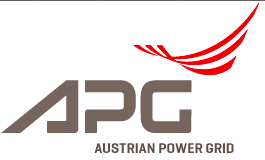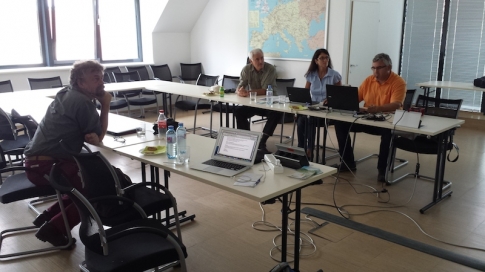News
2014-08-06
Meeting with APG in Austria
We met APG, the Austrian TSO, on August 6th in Linz. We had contacts with APG since 2012, but this was the first occasion to meet and to see what APG is doing on the field. This meeting has been set up in the framework of our networking campaign launched in March 2014.

Presentation of APG's actions and LIFE Elia project
APG is the only TSO in Austria, employing around 450 people. High-tension grid is 3.600 km long, and the voltage is 110-220-380kV.
We were very impressed by the fact that APG has decided in 2003 to manage vegetation by integrating biodiversity on the highest priority. Since 2005, their national program for vegetation management is on the track. Even though their first concerns remain electrical safety, APG admit it is easier to work in accordance with biodiversity than by clear-cuts. On these experiences, they wrote 13 manuals on how to manage vegetation under the overhead lines. Methods used are very similar to those tested in the LIFE Elia project: grazing, mowing, planting edges, controlling invasive species, digging ponds...
They are working closely with local partners that work hand in hand with APG to manage the forest corridors, without proper contract but rather by man-to-man agreements. This way of doing is relying on a network of experts (subcontractors) who are active locally in different parts of Austria.

We presented the LIFE Elia projet which was indeed very similar to what APG has implemented. Definitively an excellent partner for our project.
Visit on-site in Linz
We had the chance to see on site actions around Linz. The first corridor we visited was managed by mowing in early June by a local horse breeder interested in the hay. Two flagships plants from the Austrian red list of plant protection were present under the lines : Trifolium alpestre and Gentiania cruciferata.


After that we visited a substation whose ground has been stabilized by dry rocks and sowed with flower species adapted to dry situations. This technique allows APG to reach 2 goals: enhancing specific biodiversity and providing an all-weather stable ground for maintenance operations in the substation. Banks from the substation were also sowed with a seed mix of rare dry meadow.


The next day was also dedicated to forest corridors visits. These corridors were mainly managed by mowing the central meadow by local farmers cooperative that was sowed with a variety of interesting plants for biodiversity (insects, birds, micro-mammals). Originally, this meadow was fully covered by Solidago sp, an invasive plant that was first removed by recurrent mowing.

Both side of the corridors are managed by using natural and diversified edges in a V-shape as developed in the LIFE Elia project.


On another spot, indigenous trees that have a big potential for biodiversity were planted in order to hide the pylon from a suburban area landscape.

In total, 9 ponds were also dug in this area, colonized by a wide range of amphibians and dragonflies.

In a specific place, rocky soil excavated for pylons construction has been spread on the ground around the pylons, creating a specific habitat hosting endangered plant species.

There is no doubt that this visit inspired us a lot. Thank to the APG team we have met !



